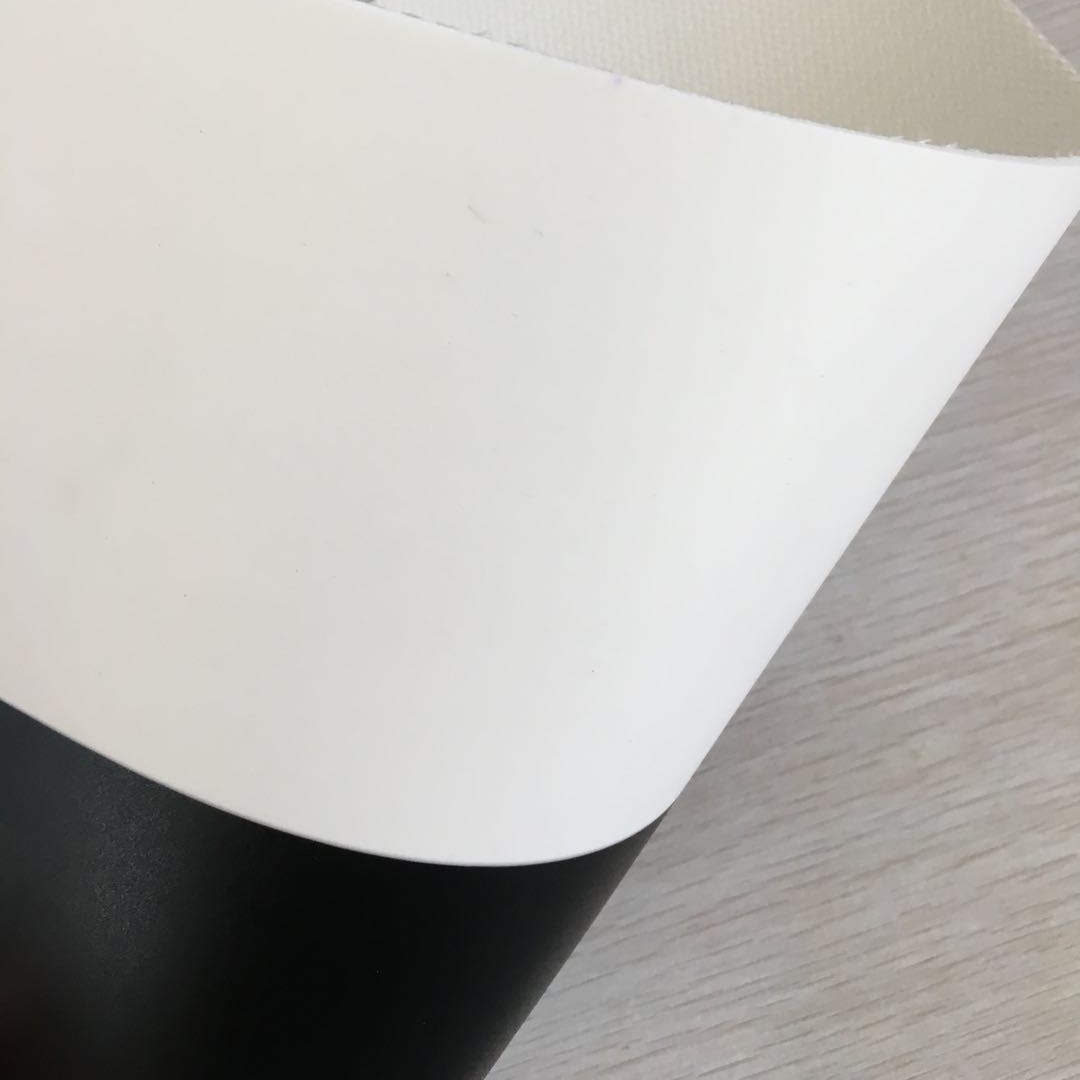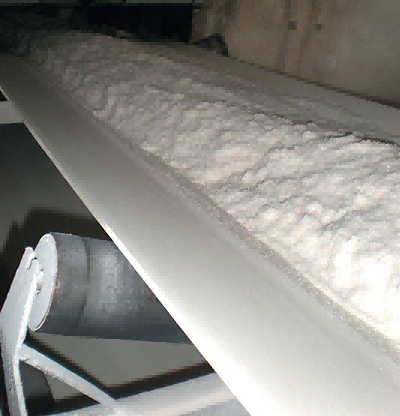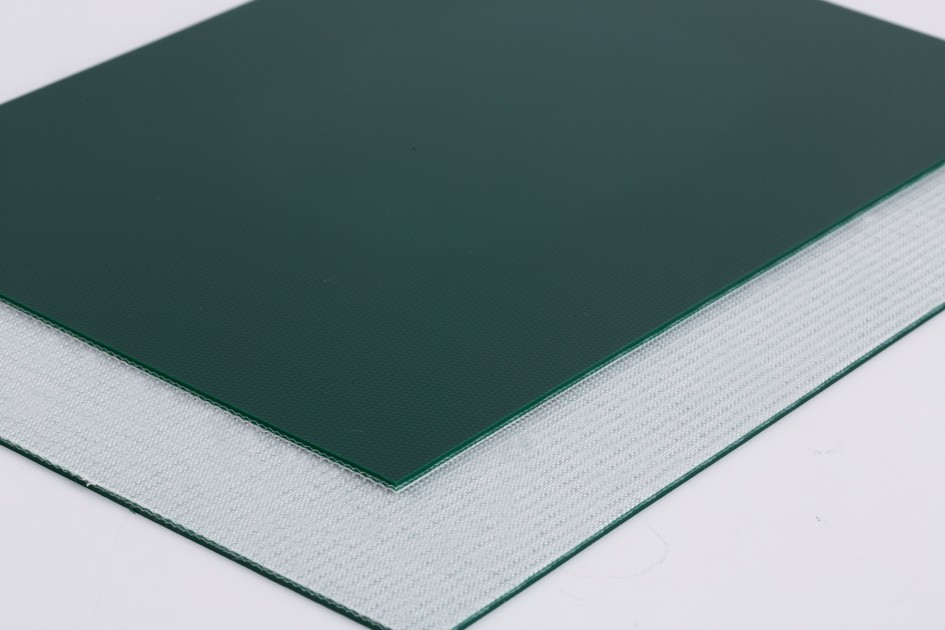Introduction
In industrial settings, conveyor belts are indispensable components that facilitate the efficient movement of materials and products along production lines. Among the various types of conveyor belts available, high-quality white PVC conveyor belts stand out for their durability, versatility, and suitability for a wide range of applications. However, to ensure that these conveyor belts maintain their longevity and performance over time, it is essential to implement effective maintenance and cleaning procedures. In this comprehensive guide, we will explore the specific maintenance and cleaning practices recommended for maximizing the lifespan and functionality of high-quality white PVC conveyor belts in industrial environments.

Understanding the Material Composition of White PVC Conveyor Belts
Before delving into maintenance and cleaning procedures, it is crucial to understand the material composition of white PVC conveyor belts. Polyvinyl chloride (PVC) serves as the base material for these belts, offering excellent resistance to abrasion, chemicals, and impact. The addition of white pigment provides aesthetic appeal while maintaining the inherent properties of PVC. This composition makes white PVC conveyor belts well-suited for industries such as food processing, pharmaceuticals, and packaging, where cleanliness and hygiene are paramount.
Importance of Regular Maintenance
Regular maintenance is the cornerstone of maximizing the longevity and performance of high-quality white PVC conveyor belts. By proactively addressing issues and implementing preventative measures, businesses can minimize downtime, reduce repair costs, and optimize operational efficiency. Furthermore, regular maintenance helps identify potential problems early on, preventing them from escalating into more significant issues that could disrupt production.
Cleaning Procedures for White PVC Conveyor Belts
Cleaning is a fundamental aspect of conveyor belt maintenance, particularly for white PVC belts used in industries with strict hygiene requirements. Proper cleaning procedures help remove debris, residues, and contaminants that can accumulate on the belt surface over time. When cleaning white PVC conveyor belts, it is essential to use suitable cleaning agents that effectively remove contaminants without causing damage to the belt material. Mild detergents or cleaners specifically formulated for use on PVC surfaces are recommended to ensure thorough cleaning without compromising belt integrity.
Methods for cleaning high-quality white PVC conveyor belts may vary depending on the type of contaminants present and the specific requirements of the application. In general, the following steps can be followed:
- Remove any loose debris or particles from the belt surface using a soft brush or vacuum cleaner.
- Prepare a cleaning solution by diluting a mild detergent or cleaner with water according to the manufacturer’s instructions.
- Apply the cleaning solution to the belt surface using a sponge, cloth, or soft-bristled brush.
- Gently scrub the belt surface to remove stubborn stains or residues, paying particular attention to areas with heavy soiling.
- Rinse the belt thoroughly with clean water to remove any remaining detergent or cleaner residue.
- Allow the belt to dry completely before resuming operations to prevent moisture-related issues such as mold or mildew growth.
It is essential to establish a regular cleaning schedule based on the specific needs of the application and the level of soiling encountered. For industries with stringent hygiene requirements, such as food processing or pharmaceuticals, daily or frequent cleaning may be necessary to maintain cleanliness standards and prevent contamination.
Inspection and Monitoring Practices
In addition to regular cleaning, routine inspection and monitoring of white PVC conveyor belts are essential for detecting wear, damage, or irregularities that could affect performance. Visual inspection techniques can be used to identify signs of wear, such as fraying edges, cracks, or tears in the belt material. It is also essential to monitor belt tension, tracking, and alignment to ensure smooth operation and prevent premature wear or damage to the belt and conveyor system.
Lubrication Requirements
Proper lubrication of conveyor belt components, such as rollers and bearings, is critical for minimizing friction and wear and tear on the belt. While high-quality white PVC conveyor belts do not require lubrication themselves, ensuring that rollers and bearings are adequately lubricated can help maintain smooth belt movement and prolong service life. It is essential to use lubricants specifically formulated for use in industrial applications and to follow the manufacturer’s recommendations for application frequency and quantity.
Addressing Specific Maintenance Challenges
Despite diligent maintenance efforts, conveyor belts may encounter specific challenges that require prompt attention and resolution. For example, stubborn stains or residues may be challenging to remove using standard cleaning procedures and may require the use of specialized cleaning agents or equipment. In cases of minor damage, such as small tears or cuts in the belt material, prompt repairs using adhesive patches or belt repair kits can prevent further deterioration and extend the lifespan of the belt. Additionally, environmental factors such as temperature fluctuations or exposure to moisture and humidity can impact belt performance and may require additional protective measures to mitigate their effects.
Training and Education for Maintenance Personnel
Ensuring that maintenance personnel are adequately trained and educated on proper maintenance procedures is crucial for maintaining the longevity and performance of white PVC conveyor belts. Training programs should cover topics such as equipment operation, safety protocols, and preventative maintenance techniques. By equipping maintenance staff with the necessary knowledge and skills, businesses can minimize the risk of errors or accidents and ensure that maintenance tasks are performed effectively and efficiently.
Documentation and Record-Keeping
Maintaining accurate records of maintenance activities and inspections is essential for tracking belt performance, identifying trends or recurring issues, and making informed decisions regarding maintenance schedules or equipment upgrades. Documentation should include details such as the date and time of maintenance activities, the specific tasks performed, any issues or anomalies observed, and any corrective actions taken. By keeping detailed records, businesses can establish a comprehensive maintenance history for each conveyor belt and use this information to optimize maintenance practices and maximize belt longevity.
Collaboration with Suppliers and Service Providers
Lastly, collaboration with conveyor belt suppliers and maintenance service providers can provide valuable support and expertise in maintaining white PVC conveyor belts. Conveyor belt suppliers can offer guidance on proper maintenance procedures, recommend suitable cleaning agents or lubricants, and provide technical assistance in addressing specific maintenance challenges. Maintenance service providers can offer specialized expertise and equipment for performing routine maintenance tasks, such as belt cleaning, inspection, and repair. By leveraging the knowledge and resources of suppliers and service providers, businesses can ensure that their white PVC conveyor belts receive the care and attention they need to perform optimally and last for years to come.
Conclusion
In conclusion, effective maintenance and cleaning procedures are essential for maximizing the longevity and performance of high-quality white PVC conveyor belts in industrial environments. By following recommended maintenance practices, including regular cleaning, inspection, lubrication, and addressing specific maintenance challenges promptly, businesses can minimize downtime, reduce repair costs, and optimize operational efficiency. Training and educating maintenance personnel, maintaining accurate documentation, and collaborating with suppliers and service providers further enhance the effectiveness of maintenance efforts. Ultimately, by prioritizing maintenance and cleaning, businesses can ensure that their white PVC conveyor belts deliver reliable and efficient performance, meeting the demands of industrial operations for years to come.





